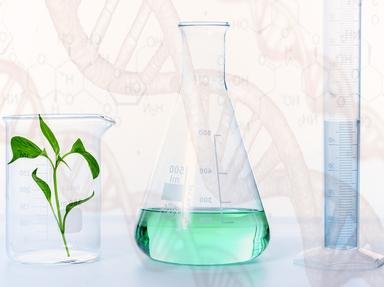Quiz Answer Key and Fun Facts
1. The atomic masses in the periodic table are not integral numbers. For example, carbon is listed as 12.011 amu (atomic mass unit) instead of 12.000 amu. Why?
2. Screening by core electrons in atoms is _______.
3. According to the Valence Shell Electron Pair Repulsion theory, if there are 5 pairs of electrons in the valence shell of an atom, they will be arranged in a(n) _____ geometry.
4. What is the mass in grams of 10.0 million H2O molecules?
5. Which of the following is a valid set of quantum numbers?
6. Phenol red has an indicator pH range of 6.8 to 8.4. Its acid color is yellow and basic color is red. In 0.10 M NaOH, this indicator will exhibit what color?
7. Determine the volume (in liters) occupied by 8.0 g oxygen at STP (MW of O2 = 32 g/mol)
8. What do you call gases that do not conform to the ideal gas laws?
9. Which of the following terms is used to describe the amount of heat present in a substance?
10. How many grams of phosphoric acid (98 g/mol) are in 175 mL of a 3.5 M solution of phosphoric acid?
Source: Author
metamorphmagus
This quiz was reviewed by FunTrivia editor
crisw before going online.
Any errors found in FunTrivia content are routinely corrected through our feedback system.
